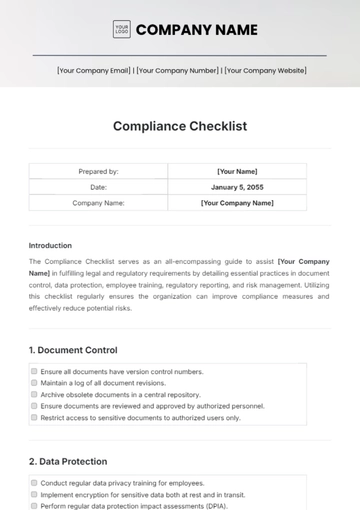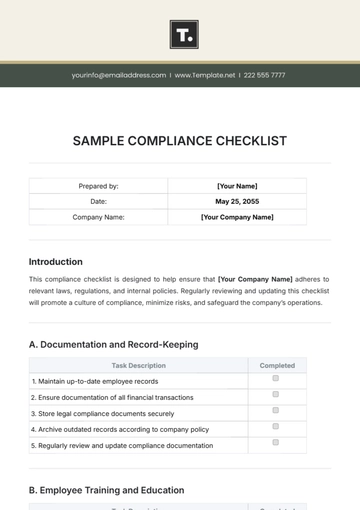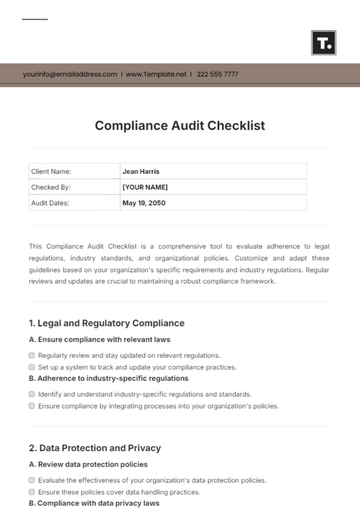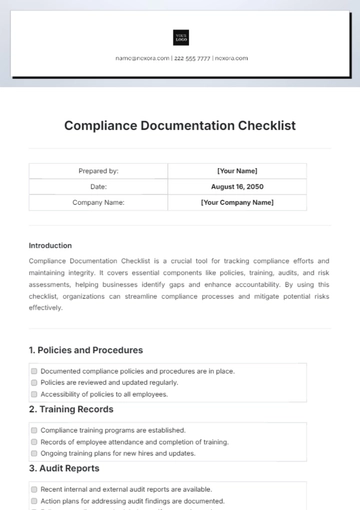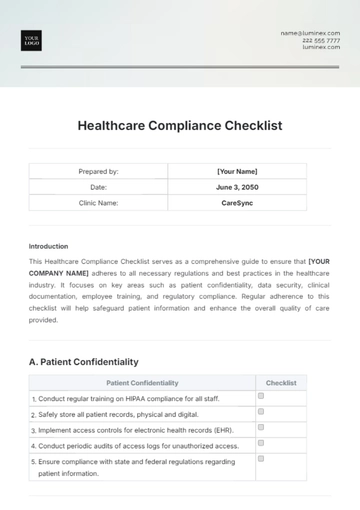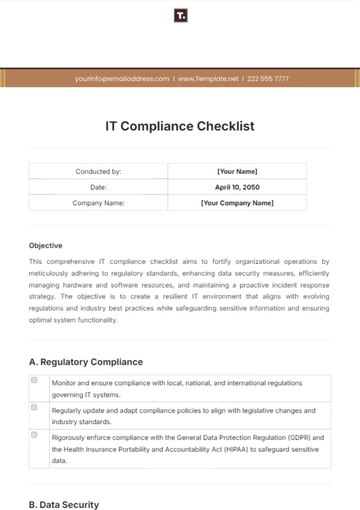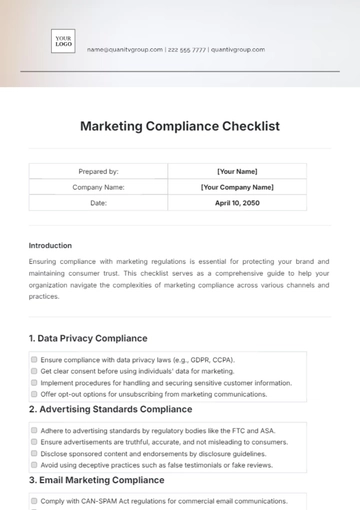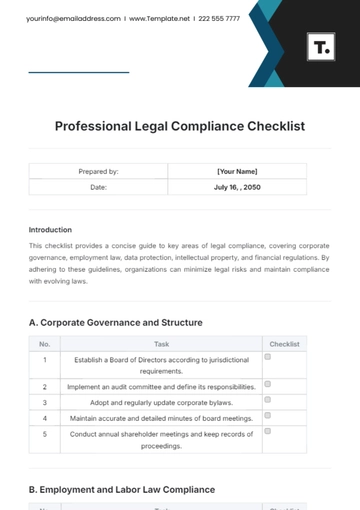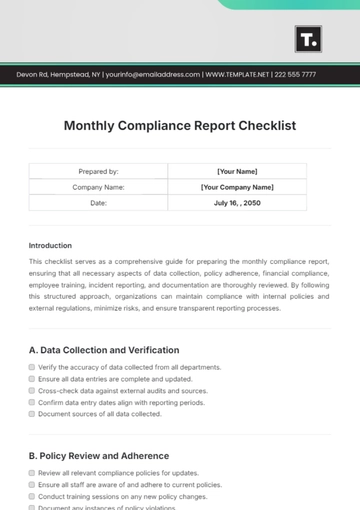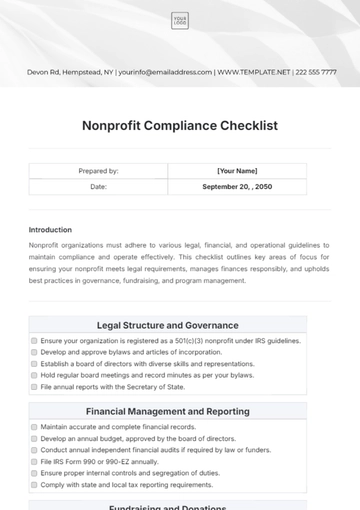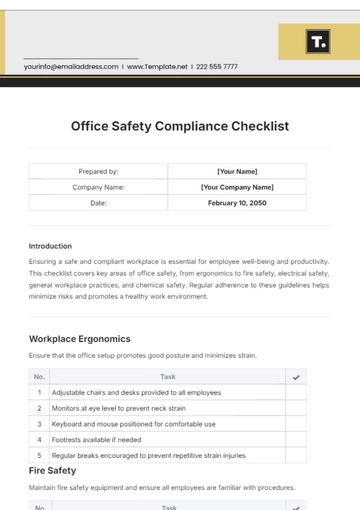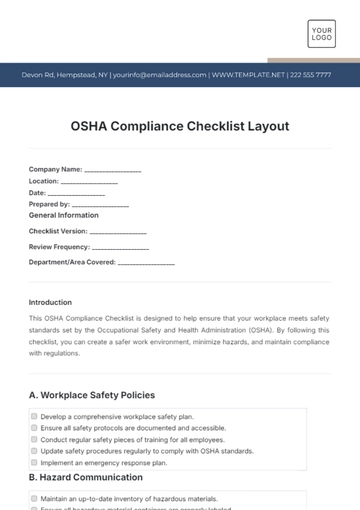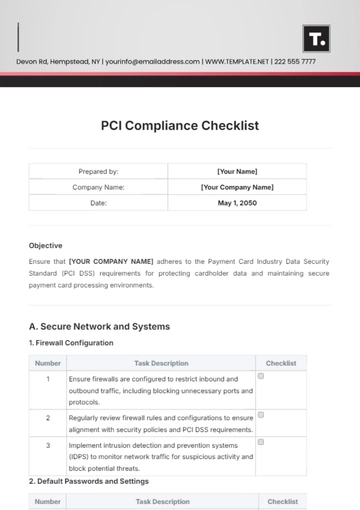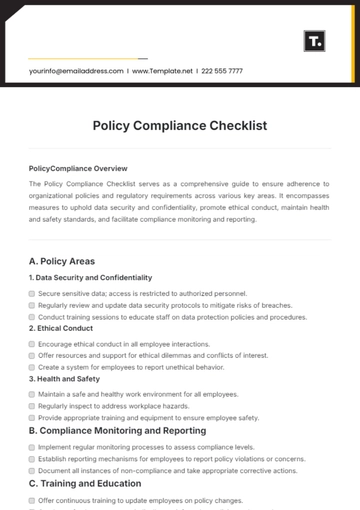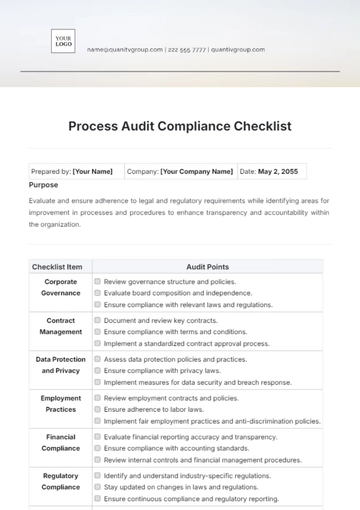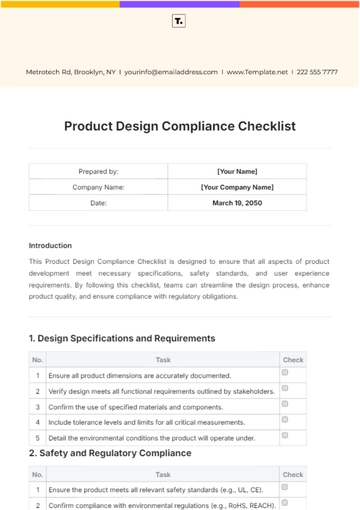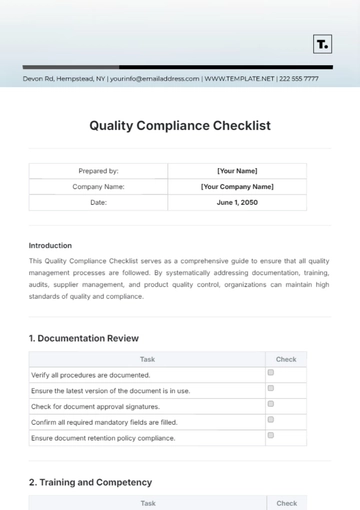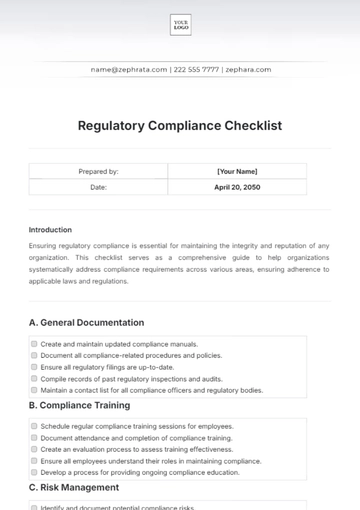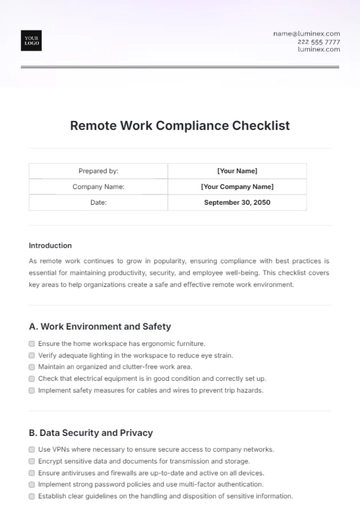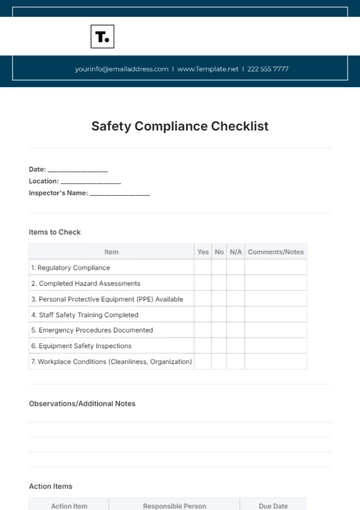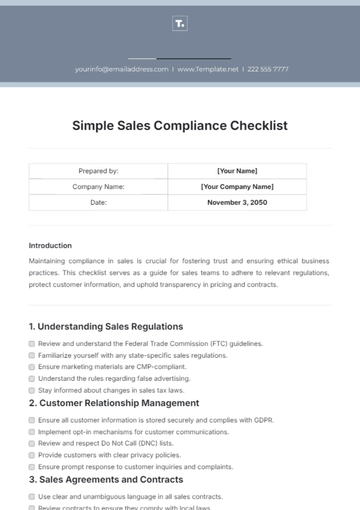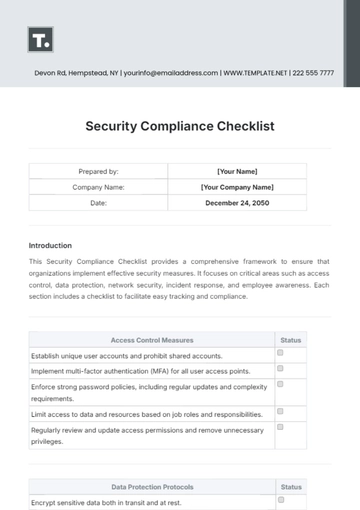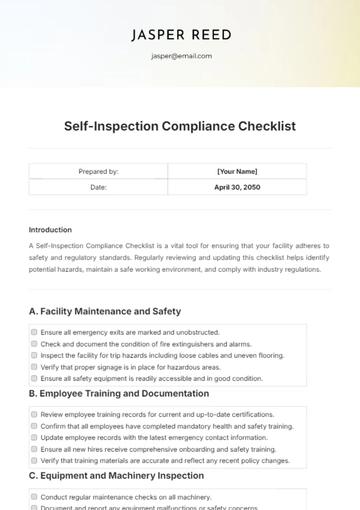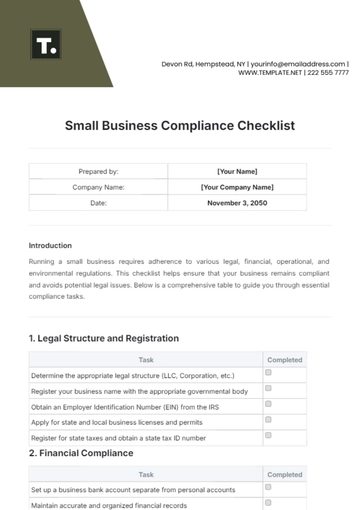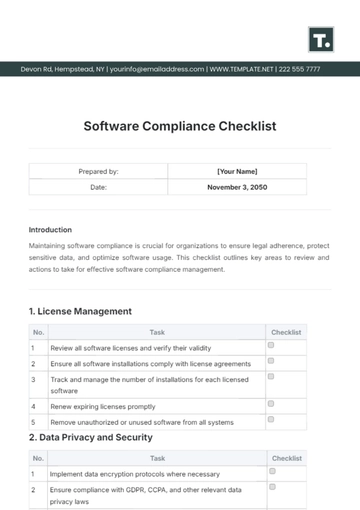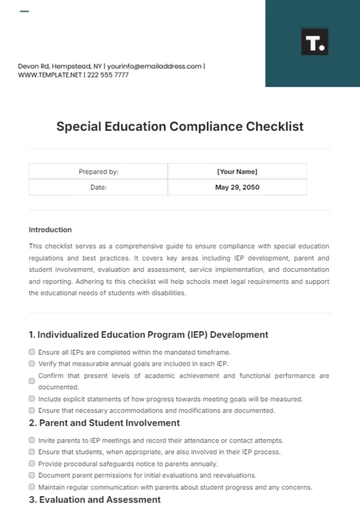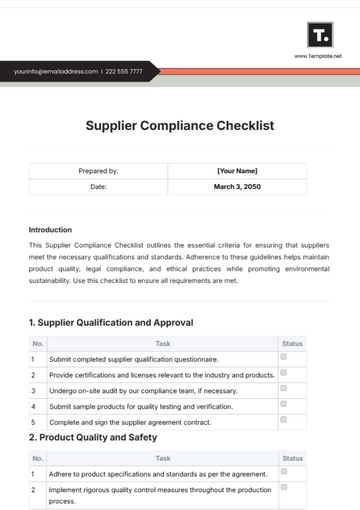Free Surgical Safety Compliance Checklist
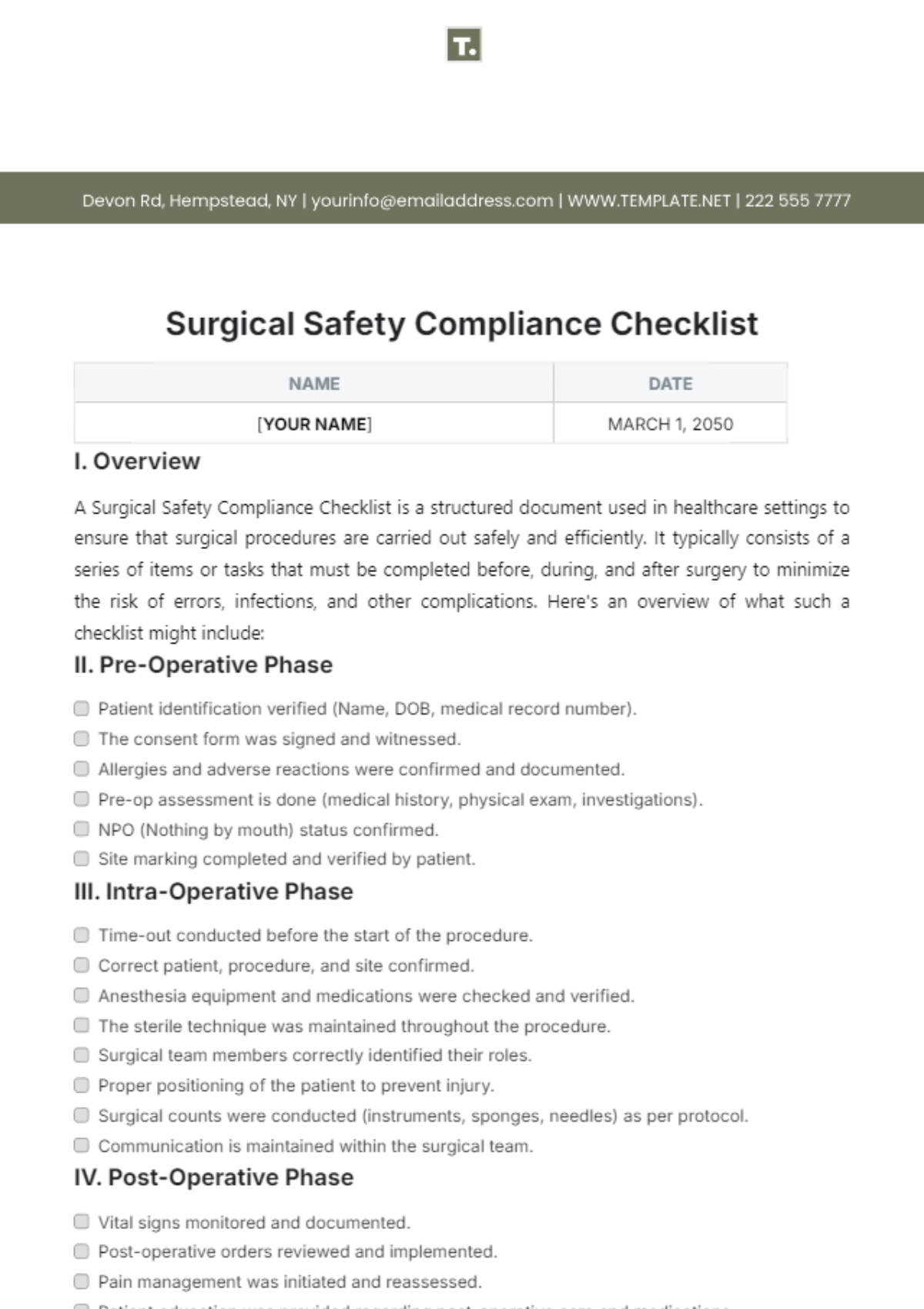
NAME | DATE |
|---|---|
[YOUR NAME] | MARCH 1, 2050 |
I. Overview
A Surgical Safety Compliance Checklist is a structured document used in healthcare settings to ensure that surgical procedures are carried out safely and efficiently. It typically consists of a series of items or tasks that must be completed before, during, and after surgery to minimize the risk of errors, infections, and other complications. Here's an overview of what such a checklist might include:
II. Pre-Operative Phase
Patient identification verified (Name, DOB, medical record number).
The consent form was signed and witnessed.
Allergies and adverse reactions were confirmed and documented.
Pre-op assessment is done (medical history, physical exam, investigations).
NPO (Nothing by mouth) status confirmed.
Site marking completed and verified by patient.
III. Intra-Operative Phase
Time-out conducted before the start of the procedure.
Correct patient, procedure, and site confirmed.
Anesthesia equipment and medications were checked and verified.
The sterile technique was maintained throughout the procedure.
Surgical team members correctly identified their roles.
Proper positioning of the patient to prevent injury.
Surgical counts were conducted (instruments, sponges, needles) as per protocol.
Communication is maintained within the surgical team.
IV. Post-Operative Phase
Vital signs monitored and documented.
Post-operative orders reviewed and implemented.
Pain management was initiated and reassessed.
Patient education was provided regarding post-operative care and medications.
Documentation of any intra-operative complications or deviations from the plan.
Effective transfer of care communicated to PACU or recovery staff.
Post-operative checklist completed and signed.
V. General Compliance
Adherence to standard infection control practices.
Compliance with universal precautions.
Proper disposal of biohazardous materials.
Documentation of any adverse events or incidents.
Compliance with hospital policies and procedures regarding surgical safety.
VI. Equipment and Facility Compliance
Surgical equipment and instruments are regularly inspected and maintained.
Anesthesia machines, monitors, and equipment are checked before each use.
Proper storage and handling of sterile supplies and medications.
Adequate lighting and ventilation in the operating room are maintained.
Emergency equipment is readily available and in working order.
VII. Staff Training and Competency
All surgical team members receive regular training on safety protocols.
Regular skill evaluations ensure surgical proficiency and safety.
All surgical care staff received emergency handling and incident response training.
Documentation of staff training and competency assessments maintained.
VIII. Quality Assurance and Improvement
Surgical safety practices are regularly audited to identify improvements.
Corrective actions and follow-up to maintain safety compliance.
Engage in quality improvement and benchmarking to standards.
Feedback from the surgical team and patients was collected to ensure compliance and identify issues.
IX. Patient Follow-Up
Post-operative follow-up appointments are scheduled and communicated to patients.
Monitoring of post-operative outcomes and complications.
Patient satisfaction surveys assessed their surgical care experience.
Documentation of post-operative course and outcomes in the medical record.
X. Regulatory Compliance
Adhering to surgical safety regulations and accreditation standards
Engage in external audits and inspections to meet regulatory standards.
Document compliance with regulations and any necessary corrective actions.
- 100% Customizable, free editor
- Access 1 Million+ Templates, photo’s & graphics
- Download or share as a template
- Click and replace photos, graphics, text, backgrounds
- Resize, crop, AI write & more
- Access advanced editor
Introducing the Surgical Safety Compliance Checklist by Template.net. This editable and customizable tool ensures adherence to crucial safety protocols in medical procedures. Tailor the checklist seamlessly in our Ai Editor Tool to meet specific surgical requirements, safeguarding both patients and healthcare professionals with ease and precision.
You may also like
- Cleaning Checklist
- Daily Checklist
- Travel Checklist
- Self Care Checklist
- Risk Assessment Checklist
- Onboarding Checklist
- Quality Checklist
- Compliance Checklist
- Audit Checklist
- Registry Checklist
- HR Checklist
- Restaurant Checklist
- Checklist Layout
- Creative Checklist
- Sales Checklist
- Construction Checklist
- Task Checklist
- Professional Checklist
- Hotel Checklist
- Employee Checklist
- Moving Checklist
- Marketing Checklist
- Accounting Checklist
- Camping Checklist
- Packing Checklist
- Real Estate Checklist
- Cleaning Checklist Service
- New Employee Checklist
- Food Checklist
- Home Inspection Checklist
- Advertising Checklist
- Event Checklist
- SEO Checklist
- Assessment Checklist
- Inspection Checklist
- Baby Registry Checklist
- Induction Checklist
- Employee Training Checklist
- Medical Checklist
- Safety Checklist
- Site Checklist
- Job Checklist
- Service Checklist
- Nanny Checklist
- Building Checklist
- Work Checklist
- Office Checklist
- Training Checklist
- Website Checklist
- IT and Software Checklist
- Performance Checklist
- Project Checklist
- Startup Checklist
- Education Checklist
- Home Checklist
- School Checklist
- Maintenance Checklist
- Planning Checklist
- Manager Checklist
- Wedding Checklist
- Vehicle Checklist
- Travel Agency Checklist
- Vehicle Inspection Checklist
- Interior Design Checklist
- Backpacking Checklist
- Business Checklist
- Legal Checklist
- Nursing Home Checklist
- Weekly Checklist
- Recruitment Checklist
- Salon Checklist
- Baby Checklist
- Equipment Checklist
- Trade Show Checklist
- Party Checklist
- Hospital Bag Checklist
- Evaluation Checklist
- Agency Checklist
- First Apartment Checklist
- Hiring Checklist
- Opening Checklist
- Small Business Checklist
- Rental Checklist
- College Dorm Checklist
- New Puppy Checklist
- University Checklist
- Building Maintenance Checklist
- Work From Home Checklist
- Student Checklist
- Application Checklist
